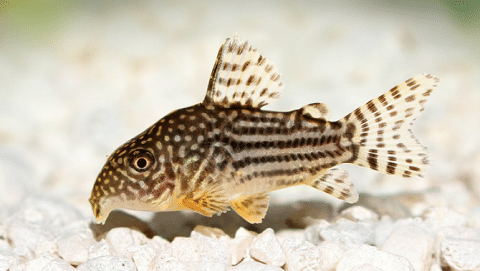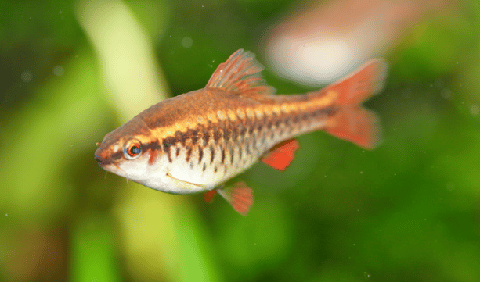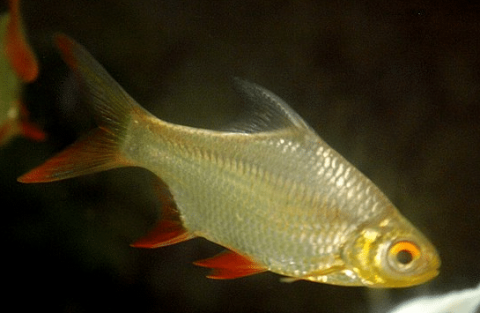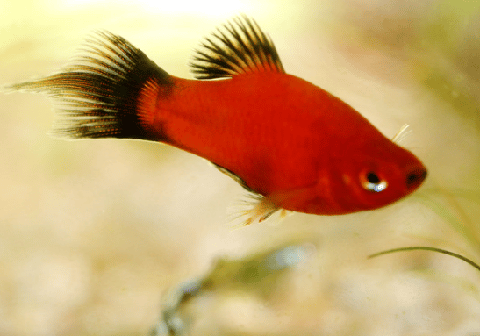Thank you for visiting! By the way… any links on this page that lead to products on Amazon and other stores/partners are affiliate links Aquarium Store Depot earns a commission if you make a purchase.
Tiger Barbs don’t have a friendly composition, but how they drive out lethargy from your aquariums is worth admiring.
While going through different fish profiles, they are listed among the most incompatible tank mates. One of the reasons why they give a tough time to aquarists is lack of information on their behavior tendencies.
Tiger Barbs don’t get along with every fish, but they don’t live alone either. So, when choosing Tiger barb tank mates, you need to consider the results of species combinations.
I have outlined the 15 most compatible tank mates with their detailed fundamentals to house your Tiger Barb with. So while many aquarists end up removing their presence in their tanks, you can keep Tiger Barbs happily and completely risk-free.
Key Takeaways
- Tiger barbs are sem-aggressive and will nip the fins of tankmates
- You can curb aggression with large schools of Tiger Barbs
- Large livebearers like Mollies and other barbs are the best tank mates for Tiger Barbs
Choosing Tank Mates – What You Need to Know
As I mentioned earlier, if you don’t understand how Tiger Barbs tend to behave with different fish species, they will be pretty hard to handle.
Matching water parameters, size, temperament, and tolerance power are some contributing factors in a healthy community tank. Sometimes, it depends on how strong the potential tank mate is.
Important: Tiger Barbs are semi aggressive fish with a deep interest in fin nipping. Long finned fish from their own species or fish from other groups can't survive with them.
Here are some of the most essential things to note down before you pick tank mates for your fish.
Temperament
Temperament is the key factor in avoiding/encouraging conflicts between fish species. While many freshwater fish are friendly, calm, and believe in growing their social communities, Tiger Barbs are famous for their territorial aggression.
Since they have temperamental issues, don’t put them with fish that are prone to getting their fins nipped. Any slow-moving fish should be avoided as well.
Size
Choosing tank mates for your Tiger Barbs that align with their size and water conditions is absolutely recommended. Even though Tiger Barbs are only 2 to 3 inches long, they are quick to get hostile which ends in picking on the other fish.
And if the fish is smaller than them, then the chances of consuming the fish are even higher.
Competition
When it comes to competition for food, Tiger Barbs are always ahead of other fish and can even eat tiny fish in the tank. To prevent this from happening, make sure that you are giving good access to food in your aquarium.
Parameters and Tank Setup
Similar to other fish species, Tiger Barbs also need the water parameters of their tank to match their requirements. And while you center your focus on this, don’t forget that there are going to be other fish in the tank that need you to meet their water conditions equally as well.
No matter what fish you choose to pair up with your Tiger Barb, no species can survive incorrect water parameters.
Though some of the fish can tolerate slight changes, remember to consider these parameters before you construct a community tank for Tiger Barbs.
- pH Levels – 6.0 – 8.0
- Water Hardness – 5-19 dGH
- Water Temperature – 77 – 82 degrees Farenheit
- Tank Size – 30 gallons
- Water Flow – Moderate to high
15 Best Tank Mates For Them
Before we delve into the list of their ideal tank mates, I want you to know that Tiger barbs are schooling fish. Housing a single Tiger barb will encourage its hostility towards other fish.
But you can avoid their aggression by keeping a group of 5 or 6 Tiger barbs together. This way, they will keep one another engaged with minor conflicts and won’t disturb their mates.
Also, introducing them after other fish in the tank will reduce their chances of going hostile. We have a video just for you from our YouTube channel. Our blog post goes into more detail so you can check out both. If you enjoy our content, be sure to subscribe as we post new videos each week.
Now let’s go through the list of some of the best Tiger Barb tank mates you can house with them. These fish species are fast-moving, their size, and can withstand minor water siftings.
1. Clown Pleco

- Scientific Name: Panaque maccus
- Adult Size: 3.5 inches
- Water Temperature: 73-82 F°
- Minimum Tank Size: 20 gallons
- Care Level: Easy
- Diet: Omnivore
- Origin: Venezuela
- Swimming Level: Midwater
Plecos are generally quiet and relaxing with a number of fish species. These tropical freshwater fish are famous as algae eaters and you can also refer to them as armored catfish.
As a general rule of thumb, if a fish has a placid nature, it should be large enough to thrive in tanks inhabited by Tiger Barbs.
Clown Plecos, therefore, are perfect tank mates for Tiger Barbs. They can stretch themselves up to 3.5 inches and live in larger tanks with lots of plants and caves to use as hideouts.
Despite the conflicts within the same species, you will hardly see them harassing their other tank mates.
2. Neon Tetras

- Scientific Name: Paracheirodon innesi
- Adult Size: 1.5 inches
- Water Temperature: 70-79 F°
- Minimum Tank Size: 10 gallons
- Care Level: Intermediate
- Diet: Omnivore
- Origin: Brazil, Colombia, and Venezuela
- Swimming Level: Middle and top
With offering you a vast range of types to look up to, Neon Tetras are the ideal Tiger Barb tank mates you will ever run into. These active fish are pretty small, going as big as only one and a half inches. But they hardly intend to disturb other tank mates they live with.
And as much as they are loved for their non-territorial conduct, their unique appearance is yet another plus point. They are fast and athletic enough to deal with a Tiger Barbs behavior
3. Ember Tetra

- Scientific Name: Hyphessobrycon amandae
- Adult Size: 0.8 inches
- Water Temperature: 73-84 F°
- Minimum Tank Size: 10 gallons
- Care Level: Easy
- Diet: Omnivore
- Origin: Brazil
- Swimming Level: Middle
Like Neon Tetra, Ember Tetras are also a very popular aquarium fish. Despite their small size, they make peaceful tank mates for most aquarium fish.
They can live in the same tank where you put Tiger Barbs, but you have to monitor them closely for a couple of days. Like the neon, this tetra species is fast and agile enough to handle the Tiger Barb’s aggression.
Because they are smaller fish compared to other species on the list, they only need a 10-gallon tank to thrive.
4. Clown Loach

- Scientific Name: Botia macracantha
- Adult Size: 12 inches
- Water Temperature: 75-85 F°
- Minimum Tank Size: 100 gallons
- Care Level: Difficult
- Diet: Carnivore
- Origin: Indonesia
- Swimming Level: Bottom
Clown Loaches feature probably the most striking colors from the Loach family. Due to its unique appearance that includes deep horizontal stripes with orange and red hues on the body, the fish can help you improve the beauty standard of your community tank.
These peaceful community fish lack scales, making them almost defenseless to poor water conditions.
The standard size of Clown Loaches is 12 inches. But they are wonderful to group with Tiger Barbs. And like other schooling fish, their preference for healthy survival is living in groups.
5. Kuhli Loach

- Scientific Name: Pangio kuhlii
- Adult Size: 3 to 4 inches
- Water Temperature: 73-86 F°
- Minimum Tank Size: 20 gallons
- Care Level: Easy
- Diet: Omnivore
- Origin: Southeast Asia
- Swimming Level: Bottom
Despite their size, Kuhli Loaches can feel endangered by Tiger Barbs. To help them shield themselves, you have to give them plenty of caves to use as hiding spots.
They usually stay in caves during the day and travel through the bottom levels during the night hours. This helps them stay away from Tiger Barbs as much as they need.
They are shy and need to live in groups to stay confident.
Kuhli Loaches are not good with fast food consumption, which means you have to opt for both sinking and floating foods for their physical fitness.
6. Swordtail Fish

- Scientific Name: Xiphophorous hellerii
- Adult Size: 6.5 inches
- Water Temperature: 70-82 F°
- Minimum Tank Size: 20 gallons
- Care Level: Easy
- Diet: Omnivore
- Origin: Mexico and northern Central America
- Swimming Level: Middle and top
For a Swordtail fish, there is no downside that can hold you back from housing them.
This moderate-sized fish has colorful and striking bodies with a typically larger tail. They are known for establishing harmony within the tanks and species.
Pro Tip: Inhabiting males and females in larger numbers will result in uncontrollable fry. So, it's better to have a limited group of pairs.
7. Red Tail Shark

- Scientific Name: Epalzeorhynchos bicolor
- Adult Size: 6 inches
- Water Temperature: 72-79 F°
- Minimum Tank Size: 55 gallons
- Care Level: Intermediate
- Diet: Omnivore
- Origin: Thailand
- Swimming Level: Bottom
A high compatibility rate is essential to consider when choosing Tiger Barb tank mates. Red Tail Shark, therefore, is an excellent and sensible option to go with.
These freshwater sharks can hunt down small fish or any slow-moving fish completely hassle-free. And like Tiger Barbs, they love to play mischievous around fish with sensitive fins or flowing fins.
But apart from these somewhat negative traits, they are known for their super energetic activities and striking color combination. In case you don’t know, Red Tail sharks are good at jumping out of the tank. So, keep a tight-fitting lid on the tank to ensure their safety.
8. Corydoras Catfish

- Scientific Name: Corydoras
- Adult Size: 4.5 inches
- Water Temperature: 74-80 F°
- Minimum Tank Size: 10 gallons
- Care Level: Easy
- Diet: Omnivore
- Origin: South America
- Swimming Level: Bottom and middle
There are plenty of tank mate options to choose from. But Corydoras Catfish can live up to your expectations as perfectly as other fish species do.
They have a friendly temperament and a good size to coexist with Tiger Barbs.
Aside from bringing along tank cleaning abilities, this hardy fish is a peaceful fish. And it gives you the freedom to choose their diet as long as it matches their basic taste.
They enjoy dense vegetation with properly gauged water parameters. But you have to give them enough swimming space to encourage tourism within.
9. Rosy Barb

- Scientific Name: Puntius conchonius
- Adult Size: 6 inches
- Water Temperature: 64-72 F°
- Minimum Tank Size: 30 gallons
- Care Level: Easy
- Diet: Omnivore
- Origin: India
- Swimming Level:
Rosy Barb is apparently one of the largest barb fish from its family. This active fish can give your tank a subtle rosy look in addition to enhancing the activity level within the tank.
Rosy barbs are another schooling fish that pose great qualities and skills to share a mutual tank with Tiger Barbs.
10. Cherry

- Scientific Name: Puntius titteya
- Adult Size: 2 inches
- Water Temperature: 74-79 F°
- Minimum Tank Size: 25 gallons
- Care Level: Easy
- Diet: Omnivore
- Origin: Sri Lanka
- Swimming Level: Middle and top
Known for their capacity to withstand temper issues of Tiger Barbs, Cherry Barbs are an excellent candidate for community tanks.
Including their mesmerizing red-colored bodies, these schooling fish are friendly and peacefully tolerant of subtle water changes.
Cherry Barbs prefer planted tanks with plenty of rocks and hideouts. But make sure to give them enough space to swim through the middle water sections.
11. Tinfoil

- Scientific Name: Barbonymus schwanenfeldii
- Adult Size: 14 inches
- Water Temperature: 72-77 F°
- Minimum Tank Size: 125 gallons
- Care Level: Intermediate
- Diet: Omnivore
- Origin: Thailand
- Swimming Level: Bottom and middle
Tinfoil Barbs are pretty large but peaceful fish. They are exceptionally active swimmers that need a minimum 125 gallon tank to enjoy free swimming.
If there are small fish species that feel threatened by a large and very active fish like Tinfoil Barbs, then it’s recommended to avoid the combination.
They are not aggressive fish, which means they can live through the cross temperamental issues of Tiger Barbs.
Pro Tip: Since they are quite big, don't add adult Tinfoil fish with young Tiger Barbs.
12. Platy

- Scientific Name: Xiphophorus maculatus
- Adult Size: 3 inches
- Water Temperature: 70-77 F°
- Minimum Tank Size: 10 gallons
- Care Level: Easy
- Diet: Omnivore
- Origin: Central America
- Swimming Level: Top
Platy fish are bright-colored fish that know how to bring peace to community tanks.
They come in various shades, ranging from orange, deep black, subtle red, yellow and silver to sometimes green.
The Platy fish are almost the same size as the typical Tiger Barn size. And like other fish that live in schools, these fish also thrive in groups of at least 5 or 6 from their species.
13. Odessa
- Scientific Name: Pethia padamya
- Adult Size: 3 to 4 inches
- Water Temperature: 74-79 F°
- Minimum Tank Size: 30 gallons
- Care Level: Easy
- Diet: Omnivore
- Origin: Southeast Asia
- Swimming Level: Bottom
Odessa Barb (video source) is perfect to put together with Tiger Barbs due to the similarities between their preferred aquarium type and acidic levels.
These fish are quite energetic that want to leave their mark almost in every corner of their tank. If you want to boost their overall health, keep them in a group of 5, which is actually the least.
Apart from this, another added advantage of keeping them together is their identical dietary requirements.
14. Black Ruby
- Scientific Name: Pethia nigrofasciata
- Adult Size: 3 to 4 inches
- Water Temperature: 72-79 F°
- Minimum Tank Size: 30 gallons
- Care Level: Easy
- Diet: Omnivore
- Origin: Sri Lanka
- Swimming Level: Bottom
Black Ruby Barb (video source) stands out pretty well in aquariums because of their peaceful qualities.
They feature beautiful shades of black and purple and love exploring well-planted tanks. Although their water conditions are similar to what a Tiger Barb prefers, they are better off with reduced pH levels.
Fish that are immune to fin-nippers can be an easy target for Black Ruby Barbs. So, I would recommend you to choose tank mates that have small fins.
15. Silver Dollar
- Scientific Name: Metynnis argenteus
- Adult Size: 6 inches
- Water Temperature: 75-82 F°
- Minimum Tank Size: 20 gallons
- Care Level: Intermediate
- Diet: Herbivore
- Origin: Brazil
- Swimming Level: Top
On this list, Silver Dollar is another fish that has a strong interest in constant and fast swimming. These fish mainly consume plants and are cousins of Piranha.
Their shimmering stripes help them stay ahead of other fish in the aquarium line. Not only this, they become instant favorites of beginner and advanced aquarists because of their interesting habits.
Silver Dollar fish do great when kept in a group of 5 or 6. They are rather large fish species when compared to Tiger Barbs, but that’s totally fine. They don’t disturb their tank mates under normal circumstances.
This fish. however, has sensitive fins that your barb can attack pretty easily.
Tank Mates to Avoid
On this list, I walked you through the 15 most compatible tank mates including some of the most popular freshwater fish.
But as much as you want to find the ideal tank mates for your Tiger Barb, there are several fish species you should keep off limits for the welfare of your pet and these species.
Any fish, for example, susceptible to fin nipping should never be kept with tiger barbs. Also, most fish species discussed in this article are fast-moving. Therefore, avoid any slow-moving fish, as well as species that are too small.
Here’s a list of the fish species you should avoid.
You should avoid housing Tiger Barbs with Angelfish because their fins are long and sensitive to attacks. Another fish species is Gold Fish or Fancy Gold Fish. They too have beautiful long and delicate fins which are an easy target for Tiger Barbs and the temperature preferences are different.
Fish species like Guppy Fish, Betta Fish and Discus Fish are some other bad choices because of their fins.
Community Tank Setup
A perfect aquarium setup is more than necessary here. Since we are going to accommodate different fish species together, understanding their basic water conditions is close to their well-being.
Tank Size
Generally, the size of your community aquarium depends on the number of fish species you have. If there are two Tiger Barbs and a single Clown Loach, then you need to have a tank size of 180 gallons.
Some tropical fish on this list are quite big and need larger tanks for themselves. While others are small, they thrive in groups. Either way, a bigger tank will help you give them the best aquarium life.
In addition to this, fish that are active swimmers need space to enjoy their day-to-day activities. Since you won’t like them running into fish that avoid rapid movements, keep a tank with plenty of space.
Filtration and Aeration
A single fish can produce enough waste to disturb water quality. And when you keep different fish in groups that vary in size and activity, the result will be way more toxic and demanding to handle.
The best possible way to prevent toxins from piling up in your tank is to get a strong filtration system. A hang-on-back filter or a canister filter will be ideal. But make sure whatever devices you go for can create moderate water currents.
Tank Maintenance
Tank maintenance is the key factor directly involved with the overall comfort of your fish.
To get you off the ground, here are some easy tips to follow.
- Make occasional water changes up to 45-50%.
- Remove excess food and waste plant material.
- Use a toothbrush to clean caves and other decors.
- Clean the aquarium walls with an algae scrubber and top off tank as needed
Aquatic Plants and Decorations
While live plants give way to more oxygenation, they are important for almost all the fish on the list. The species do well when they feel at home, and thick vegetation can give them that home effect.
Some great recommendations for live plants can be:
Substrate
For creating substrate, layer the base of the tank with a soft sandy substrate that is at least 2 inches deep. Some bottom dwellers will scan through the substrate for food while others with sensitive bodies can stay safe with a soft substrate.
Use manufactured caves for the bottom. Because bottom dwellers like Clown Pleco and Kuhli Loach can feel safe by their presence in their habitat.
Food and Diet
Your fish need a good range of foods to survive. Even if they tolerate variations in their diet, they still need you to feed them their favorite foods.
Since we have a lot of fish that are active, peaceful, and slightly wild, fair access to food is important.
You can give Tiger Barbs and their tank mates a mixed diet of live food and frozen food. Including, brine shrimp. algae wafers, and fish flakes. Bloodworms, insect larvae, mosquito larvae, and algae are some other great options.
The chances of competition can be really high based on the species. Fish that have friendly dispositions can be left to survive on leftovers. The other species that live in different water sections can also struggle to eat. In this case, using sinking and floating foods will be optimal.
Another crucial thing to keep on the forefront is the amount of food you put in the tank. Some species can get overfed if you don’t monitor who is eating how much.
Pro tip: Keep your Tiger Barbs well-fed to prevent them from nipping at the fins of their mates.
Where to buy their tank mates
All species on this list are hugely popular in the aquarium trade and easy to find. You can check them individually in your local store. And in case your desired fish type is not available, you can check out some online fish stores that you trust for the purchase.
FAQs
Can I put them in a community tank?
Tiger Barbs are aggressive and handling them in community tanks is challenging. But despite their traditional behavior, they don’t live alone. You can introduce a wide range of fish species to them that can align with your Tiger Barb.
Are they aggressive?
Yes. This is the core reason you have to be cautious while choosing their tank mates. While you can’t change the way they behave, you can reduce their aggression.
The easiest way to do this is to keep at least 3-4 barbs together. And when you add them to community tanks, put them when there are already other fish species living in the tank.
Do they eat other fish?
Any small fish that can’t defend itself and can end up as their diet. Tiger Barbs are already aggressive since smaller fish will be an easy target for them.
How many should be together?
Ideally, a group of 5 to 6 Tiger Barbs do well. But if you want to keep them with other species, don’t go under the count of 3.
How big do they get?
Tiger Barbs that live in the wild can go as big as 4 inches. But captive-bred fish are usually 2.5 inches to 3 inches long.
Fulfilling their food needs, aquarium demands and other basic requirements might help them grow bigger.
Do they and Neon Tetras get along?
Tiger Barbs and Neon tetras are compatible to live together. Neon tetras are smaller, but they know how to make their way around these aggressive barbs.
Closing Thoughts
If you’re looking for a little more excitement in your tank, tiger barbs can be a great choice. However, finding the right tank mates is key – without them, your tigers may become stressed and aggressive. With the right mix, though, they can be community fish that add beauty and interest to any aquarium. Have you kept tiger barbs before? Let us know your experience in the comments!
- About the Author
- Latest Posts
I’m thrilled that you found Aquarium Store Depot! Here you’ll find information on fish, aquariums, and all things aquatics related. I’m a hobbyist (being doing this since I was 11) and here to help other hobbyists thrive with their aquariums! I adhere to a high quality Editorial Process and Review products with real life field usage and practical analysis.






I know it’s not recommended but I have added tiger barbs to my south American chiclid tank. I purchased two angel fish and four barbs and am hoping with the abundance of plants it will all work out okay. Other south American chiclid in the tank include three convict two fire mouth and a pleco. Wish me luck lol.
Good luck indeed. Tiger barbs are known for nipping Angelfish. You should be okay with the convicts though.
This was the best guide I’ve read on the subject – and I’ve read a lot the past few weeks! Recently set up my tank. I want to ensure everything is done meticulously to ensure the fish will have comfortable and healthy lives from the very beginning. Thanks for writing this.
Thanks for your comment Glena. I’m glad you got value out of it.